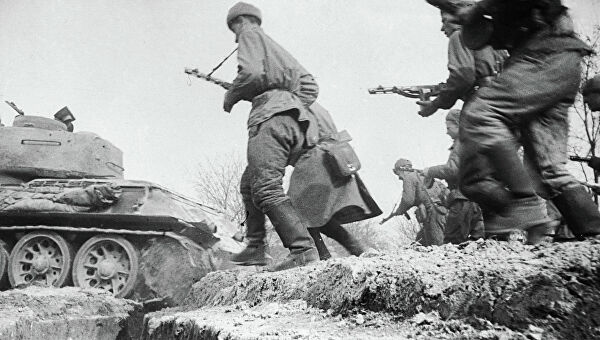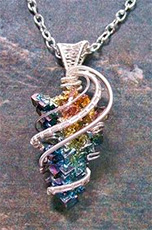The influence of man on nature. Positive and negative effects: examples
Introduction
The problem of the interaction of two powerful systems “Nature” and “Society” is both old and modern. The old one - because it appeared a long time ago, from the moment the biological species “Homo sapiens” appeared. Modern - because the scale of the impact of society on nature has reached catastrophic proportions.
The protection of nature is the most important task of mankind. The current scale of human impact on the natural environment, the commensurability of the scale of human economic activity with the potential ability of modern landscapes to assimilate its adverse effects. Crises in the development of the natural environment, the global nature of the current crisis environmental situation.
Environmental activities - the process of conservation, restoration and reproduction of natural potential, which should be an essential component of economic activity as a whole. The development of environmental activities is a necessary prerequisite for overcoming the crisis in the environment. In modern conditions, the content and direction of activities to protect nature and preserve the natural resource potential have expanded significantly. In order to preserve this part of the national wealth in the process of nature management, it is necessary to determine: the correspondence of the natural resources available on the planet (in the country, region), their geological position and condition to the goals and desired rates of economic development; the possibility of developing this or that production depending on the state of the environment; changes in economic growth due to limited resources; limiting the consumption of certain natural resources in the interests of future generations; the impact of environmental pollution on the further development of the economy; main strategic ways to solve economic and environmental problems; exploration capabilities of natural resources and the impact of scientific and technological progress on this process; the possibility of replacing traditional fuels, energy and other natural resources with non-traditional ones, etc.
In the process of mining and processing of minerals, a person affects a large geological cycle. Firstly, a person transfers mineral deposits into other forms of chemical compounds. For example, a person gradually runs out of combustible minerals (oil, coal, gas, peat) and ultimately converts them into carbon dioxide and carbonates. Secondly, a person distributes on the surface of the earth, scattering, as a rule, former geological accumulations.
The impact of mining on nature
Currently, about 20 tons of raw materials are extracted annually for each inhabitant of the Earth, of which a few percent go into the final product, and the rest is turned into waste. Significant losses of mineral components (up to 50-60%) are noted during mining, enrichment and processing.
In underground mining, coal losses are 30–40%, in open-cast mining - 10%. In the case of open-pit mining of iron ores, losses amount to 3-5%, in underground mining of tungsten-molybdenum ores, losses reach 10-12%, and in open pit production, 3-5%. In the development of mercury and gold ore deposits, losses can reach 30%.
Most mineral deposits are complex and contain several components, the extraction of which is economically viable. In oil fields, the associated components are gas, sulfur, iodine, bromine, boron, and in gas fields, sulfur, nitrogen, and helium. The most complex are characterized by non-ferrous metal ores. Deposits of potassium salts usually contain sylvin, carnallite and halite. The most intensive further processing is subjected to sylvin. The loss of sylvin is 25-40%, the loss of carnallite - 70-80%, halite - 90%.
Currently, there is a constant and rather significant decrease in the metal content in the extracted ores. Thus, over the past 2–3 decades, the content of lead, zinc, and copper in ores decreased by 2–2.3% annually, molybdenum by almost 3%, and the antimony content only decreased by almost 2 times over the past 10 years. The iron content in ore mined is reduced by an average of 1% (absolute) per year.
Obviously, after 20-25 years, to obtain the same amount of non-ferrous and ferrous metals, it will be necessary to more than double the amount of extracted and processed ore.
During the extraction and processing of minerals, a large geological cycle takes place, in which various systems are involved. As a result, there is a large impact on the ecology of the mining region, and such an impact entails negative consequences.
The scale of mining is large - up to 20 tons of raw materials are extracted per inhabitant of the Earth per year, of which less than 10% goes to the final product, and the remaining 90% is waste. In addition, during mining there is a significant loss of raw materials of about 30 - 50%, which indicates the inefficiency of some types of production, especially the open method.
Russia is a country with a well-developed extractive industry, has deposits of basic raw materials. The issues of the negative impact of the extraction and processing of raw materials are very relevant, since these processes affect all areas of the Earth:
- lithosphere;
- atmosphere:
- water
- animal world.
Impact on the lithosphere
Any mining method involves the extraction of ore from the earth's crust, which leads to the formation of cavities and voids, the integrity of the crust is violated, and fracture increases.
As a result of this, the likelihood of landslides, landslides, faults in the territory adjacent to the mine is growing. Anthropogenic landforms are created:
- careers;
- dumps;
- waste heaps;
- ravines.
Such atypical forms are large, the height can reach 300 m, and the length is 50 km. Embankments are formed from waste from processed raw materials; trees and plants do not grow on them - they are just kilometers of unusable territory.

During the extraction of rock salt, in the enrichment of raw materials, halite waste is generated (three to four tons of waste are produced per ton of salt), they are solid and insoluble, and rainwater transfers them to rivers, which are often used to provide drinking water to the population of nearby cities.
The environmental problems associated with the emergence of voids can be solved by filling waste ravines and excavations in the earth's crust formed by mining with waste and processed raw materials. It is also necessary to improve production technology in order to reduce the extraction of waste rock, this can significantly reduce the amount of waste.
Many rocks contain several types of minerals, so it is possible to combine the extraction and processing of all ore components. This is not only economically viable, but also has a beneficial effect on the environment.
Another negative consequence associated with the extraction of minerals is their pollution of nearby agricultural soils. This happens during transportation. Dust scatters for many kilometers and settles on the surface of the soil, on plants and trees.

Many substances can release toxins, which then enter the food of animals and humans, poisoning the body from the inside. Often around the magnesite deposits that are being actively developed, there is a wasteland up to 40 km in radius, the soil changes the alkaline-acid balance, and plants stop growing, and nearby forests die.
As a solution to this problem, environmentalists propose to place raw materials processing enterprises near the extraction site, this will also reduce transport costs. For example, locate power plants near coal deposits.
And finally, the extraction of raw materials significantly depletes the earth's crust, the stocks of substances decrease every year, the ores become less saturated, this contributes to large volumes of extraction and processing. As a result, an increase in waste volumes. The solution to these problems could be the search for artificial substitutes for natural substances and their economical consumption.
Salt mining
Effect on the atmosphere
Colossal environmental problems are provided by mining in the atmosphere. As a result of the primary processing of mined ores, large volumes are thrown into the air:
- methane
- oxides
- heavy metals
- sulfur
- carbon.
Created artificial waste heaps are constantly burning, releasing harmful substances into the atmosphere - carbon monoxide, carbon dioxide, sulfur dioxide. Such air pollution leads to an increase in radiation levels, a change in temperature indicators and an increase or decrease in precipitation.

During extraction, a large amount of dust enters the air. Every day, up to two kilograms of dust fall on the territories adjacent to the quarries, as a result, the soil remains buried under a half-meter layer for many years, and often forever, and, of course, loses its fertility.
The solution to this problem is the use of modern equipment that reduces the level of emissions of harmful substances, as well as the use of shaft mining instead of open.
Impact on the aquatic environment
As a result of the extraction of natural raw materials, both underground and surface water bodies are greatly depleted, and swamps are drained. During coal mining, groundwater is pumped out, which are located near the deposit. For each ton of coal, up to 20 m 3 of formation water is accounted for, and in the mining of iron ores, up to 8 m 3 of water. Pumping water creates environmental problems such as:
 In addition to oil spills on the surface of the water, there are other threats to lakes and rivers
In addition to oil spills on the surface of the water, there are other threats to lakes and rivers - the formation of depression funnels;
- disappearance of springs;
- drying of small rivers;
- the disappearance of streams.
Surface water suffers from pollution as a result of the process of extraction and processing of fossil raw materials. Like the atmosphere, a large amount of salts, metals, toxic substances, and waste enters the water.
As a result of this, microorganisms living in water bodies, fish and other animals die, a person uses contaminated water not only for his household needs, but also for food. Environmental problems associated with the pollution of the hydrosphere can be prevented by reducing wastewater discharges, reducing water consumption during production, and filling the voids formed with water.
This can be achieved by improving the process of extraction of raw materials, using new developments in the field of engineering for the mining industry.
Impact on fauna and flora
During the active development of large deposits of raw materials, the radius of contamination of nearby soils can be 40 km. The soil is subject to various chemical changes, depending on the harmfulness of the processed substances. If a large amount of toxic substances gets into the ground, trees, shrubs and even grass die on it and do not grow.

Consequently, there is no food for animals, they either die or are looking for new places to live, whole populations migrate. The solution to these problems should be to reduce the level of emissions of harmful substances into the atmosphere, as well as compensatory measures for the restoration and purification of contaminated territories. Compensation measures include soil fertilization, forest planting, pasture management.
When developing new deposits, when the topsoil is removed - fertile black soil, it can be transported and distributed in poor, depleted places, near already inactive mines.
Video: Pollution
The overall economic burden on ecological systems is simplified by three factors: population, average consumption, and widespread use of various technologies. It is possible to reduce the degree of damage caused to the environment by a consumer society by changing agricultural models, transport systems, urban planning methods, the intensity of energy consumption, revising existing industrial technologies, etc.
Extraction of minerals from the bowels of the Earth affects all its spheres . Impact of mining on the lithosphere manifests itselfin the following:
1) the creation of anthropogenic landforms: quarries, dumps (up to 100-150 m high), heaps, etc. Terricon- a conical dump of enrichment waste. The volume of the heap reaches up to several tens of millions m 8, height - 100 m and more, the development area is dozens of hectares. Blade - the embankment formed as a result of the placement of overburden in specially designated areas. As a result of open mining, quarries with a depth of more than 500 m are formed;
2) ativization of geological processes (karst, landslides, scree, sedimentation and shifting of rocks). Underground mining results in subsidence and failure. In Kuzbass, a chain of dips (up to 30 m deep) stretches for more than 50 km;
4) mechanical disturbance of soils and their chemical pollution.
In the world, the total area of \u200b\u200bland disturbed by mining operations exceeds 6 million hectares. These lands should be supplemented with agricultural and forest land, on which mining has a negative impact. Within a radius of 35-40 km from the current quarry, crop productivity is reduced by 30% compared with the average level.
The upper layers of the lithosphere within the territory of Belarus are experiencing an intense impact as a result of engineering and geological research and exploration on various types of minerals. It should be noted that only from the beginning of the 50s of the XX century. About 1,400 exploration and production wells for oil (up to 2.5-5.2 km deep), over 900 wells for rock and potassium salt (600-1500 m deep), more than 1000 wells of geological objects with special aesthetic and recreational value were drilled .
Conducting seismic studies using drilling and blasting operations, the density of which is especially high within the Pripyat Trough, causes a violation of the physico-chemical properties of the soil, pollution of groundwater.
Mining affects the state of the atmosphere:
1) air pollution occurs by emissions of methane, sulfur, carbon oxides from mine workings, as a result of burning dumps and heaps (emission of oxides of nitrogen, carbon, sulfur), gas and oil fires.
More than 70% of the Kuzbass waste heaps and 85% of the Donbass dumps are burning. At a distance of several kilometers from them, the concentrations of S0 2, C0 2, and CO are significantly increased in air.
In the 80s. XX century in the Ruhr and Upper Silesian basins, for every 100 km 2 of the area, 2-5 kg \u200b\u200bof dust fell daily. Due to the dustiness of the atmosphere, the intensity of sunshine in Germany decreased by 20%, in Poland - by 50%. The soil in the fields adjacent to the quarries and mines is buried under a layer of dust up to 0.5 m thick and for many years loses its fertility.
The impact of mining on the hydrosphere manifested in the depletion of aquifers and in the deterioration of the quality of groundwater and surface water. As a result, springs, streams, many small rivers disappear.
The mining process itself can be improved through the use of chemical and biological methods. This is an underground leaching of ores, the use of microorganisms.
The accident at the Chernobyl nuclear power plant led to radioactive contamination a significant part of the country's mineral resources found in the zone of its negative impact. According to research, 132 deposits of mineral resources were found in the zone of radioactive contamination, including 59 under development. These are mainly deposits of clay, sand and sand and gravel, cement and lime raw materials, building and facing stone. The Pripyat oil and gas basin and the Zhitkovichi brown coal and oil shale deposit also fell into the pollution zone.
Currently, about 20 tons of raw materials are extracted annually for each inhabitant of the Earth. Of these, a few percent goes into the final product, and the rest of the mass turns into waste. Most mineral deposits are complex and contain several components, the extraction of which is economically viable. In oil fields, associated components - gas, sulfur, iodine, bromine, boron, in gas fields - sulfur, nitrogen, helium. Potash deposits usually contain sylvin and halite. Currently there is a constant and quite substantial reduction in the amount of metals in ore mined.The amount of iron in ore mined is reduced by an average of 1% (absolute) per year. Therefore, to obtain the same amount of non-ferrous and ferrous metals in 20-25 years, it will be necessary to increase the amount of mined and processed ore more than 2 times.
Similar information.
"Mineral Test" - Geologists Archaeologists Biologists. Coal Granite Peat. 4. What is the name of the open pit in which the minerals are mined? 6. What minerals do gasoline produce from? Mine Quarry Deposit. Coal Oil Peat. From coal From oil From gas. What is the name of the place where minerals lie?
“Minerals and Minerals” - Oil production and transportation. Extraction of clay and sand. Minerals mined in the native land. The game "Casket malachitnitsy." Physical map of Russia. We are researchers. Satisfied not quite satisfied dissatisfied, because ... Opencast coal mining. Lesson summary. What do we call minerals?
"Combustible minerals" - Combustible minerals. Coal Quarry. Peat. Oils. First well. Fuel. Coal. Oil. Fertilizer. Plastic. Litter for animals. Describe one mineral to choose from; Create a crossword on the topic "Minerals". Condition color is the smell of flammability. Paints, rubber, plastic, medicines.
“Minerals of Kazakhstan” - 1. In 2006, the forces of NGOs conducted an analysis of the compliance of the legislation of the Republic of Kazakhstan with transparency principles, as a result of which recommendations were made to the government. (see http://sustdevelopment.narod.ru/analit/Rec_laws_EITI.doc). The value of exported minerals during 2001 - 2006 according to the customs committee of the Ministry of Finance of the Republic of Kazakhstan.
"Minerals of Russia" - (Confined to shields). Gold. What are minerals? The plan for studying the topic. Combustible (Sedimentary). Malachite. Mineral platforms. Gas Oil coal. Iron ore Copper ore Nickel ores Gold silver. Creation of anthropogenic landforms: quarries, heaps, voids in the earth's crust. The groundwater.
“Oil Production” - Pilot production of 1 year 12 vibrators. Promising is the creation of an enterprise in Iran to serve the Arab market. 5 year financial results (RF, CIS, China, Venezuela). The main foundation of commercial success is. Financial results 1-3 year (RF and CIS). LLC Center for Ultrasonic Technologies.
The nature of the relief, the level of pound water occurrence are taken into account when designing a system for mining mineral resources. They also affect the environmental consequences of mining: the placement of dumps, the spread of dust and gases, the formation of depression funnels, karst, the behavior of subsurface waters and much more. The methods and extent of ore extraction vary over time.
Industrial mining, starting from the XVIII century, was carried out using vertical mine workings: deep pits (up to 10 m), mines. If necessary, several horizontal workings were passed from the vertical mine, the depth of which was determined by the level of groundwater. If they began to fill the mine, pit, production ceased due to lack of drainage equipment. Traces of old mine workings can be observed today in the vicinity of Plast, Kusa, Miass and many other cities and towns of the mining zone of the region. Some of them remain unclosed, not blocked until now, which poses a certain danger. Thus, the vertical amplitude of environmental changes associated with the extraction of mineral raw materials, until the XX century, barely exceeded 100 m.
With the advent of powerful pumps that drain from workings, excavators, heavy vehicles, the development of mineral resources is increasingly carried out in an open-pit mining method.
In the Southern Urals, where most deposits occur at depths of up to 300 m, quarrying predominates. In quarries, up to 80% (by volume) of all minerals is mined. The deepest mining in the region is the Korkinsky coal mine. Its depth at the end of 2002 was 600 m. Major quarries are in Bakal (brown iron ore), Satka (magnesite), Mezozernoy (copper ore), Upper Ufaley (nickel), Magnitogorsk and Maliy Kuybas (iron).
Quite often quarries are located in the city, on the outskirts of villages, which seriously affects their ecology. Many small quarries (several hundred) are located in the countryside. Almost every large rural enterprise has its own quarry with an area of \u200b\u200b1-10 ha, where crushed stone, sand, clay, and limestone are extracted for local needs. Usually, mining is carried out without observing any environmental standards.
Underground mine workings — mines (mine fields) are also widespread in the region. In most of them, mining is no longer underway, they are worked out. Some of the mines are flooded with water, some are laid down by the waste rock lowered into them. The area of \u200b\u200bspent mine fields in the Chelyabinsk brown coal basin alone is hundreds of square kilometers.
The depth of modern mines (Kopeisk, Plast, Mezhevy Log) reaches 700-800 m. Some Karabash mines have a depth of 1.4 km. Thus, the vertical amplitude of environmental changes in our time, taking into account the height of dumps, heaps in the territory of the Southern Urals, reaches 1,100-1,600 m.
Alluvial gold deposits in river sands have been developed in recent decades with the help of drags - large washing machines capable of taking loose rock from depths up to 50 m. Hydraulic mining is carried out on small placers. The rocks containing gold are washed away by powerful jets of water. The result of such production is a “man-made desert” with a washed away soil layer and a complete absence of vegetation. You will find such landscapes in the Miass Valley, south of Plast. The scale of extraction of mineral raw materials is increasing annually.
This is due not only to an increase in the consumption of certain minerals and rocks, but also to a decrease in the content of useful components in them. If earlier in the Urals, in the Chelyabinsk region, polymetallic ores with a content of useful elements of 4-12% were mined, now poor ores are being developed where the content of valuable elements barely reaches 1%. In order to get a ton of copper, zinc, iron from ore, it is necessary to extract much more rock from the bowels than in the past. In the middle of the 18th century, the total extraction of minerals per year in the region amounted to 5-10 thousand tons. At the end of the 20th century, mining enterprises of the region process 75–80 million tons of rock mass annually.
Any method of mining significantly affects the natural environment. The upper part of the lithosphere is particularly affected. With any mining method, significant excavation of rocks and their movement takes place. The primary relief is replaced by man-made. In mountainous areas, this leads to a redistribution of surface air flows. The integrity of a certain volume of rocks is violated, their fracture increases, large cavities, voids appear. A large mass of rocks moves to dumps, the height of which reaches 100 m or more. Often dumps are located on fertile lands. The creation of dumps is due to the fact that the volume of ore minerals in relation to the rocks enclosing them is small. For iron and aluminum, this is 15-30%, for polymetals - about 1-3%, for rare metals - less than 1%.
Pumping water from quarries and mines creates extensive depression funnels, zones of declining aquifer levels. During quarrying, the diameters of these funnels reach 10-15 km, the area - 200-300 square meters. km
The passage of mine shafts also leads to the connection and redistribution of water between previously separated aquifers, breakthroughs of powerful streams of water into the tunnels, mine faces, which greatly complicates production.
The depletion of pound water in the area of \u200b\u200bmine workings and the drainage of surface horizons strongly affect the condition of soils, vegetation, the magnitude of surface runoff, and determine the general change in the landscape.
The creation of large quarries and mine fields is accompanied by the activation of various engineering-geological and physical-chemical processes:
- there are deformations of the sides of the quarry, landslides, mudflows;
- there is a subsidence of the earth's surface over the spent mine fields. In rock formations it can reach tens of millimeters, in weak sedimentary rocks - tens of centimeters and even meters;
- in the areas adjacent to the mine workings, soil erosion and gully formation are intensified;
- in the workings and dumps, the weathering processes are activated many times, intensive oxidation of ore minerals and their leaching are in progress, many times faster than in nature, the migration of chemical elements;
- in a radius of several hundred meters, and sometimes kilometers, soil is contaminated with heavy metals during transportation, wind and water spacing, soils are also contaminated with oil products, construction and industrial waste. Ultimately, wasteland is created around large mine workings on which vegetation does not survive. For example, the development of magnesites in Satka led to the death of pine forests within a radius of 40 km. Dust containing magnesium got into the soil and changed the alkaline-acid balance. Soils have turned from acidic to slightly alkaline. In addition, quarry dust cemented the needles, leaves of plants, as it were, which caused their impoverishment, an increase in dead cover spaces. In the end, the forests died.







